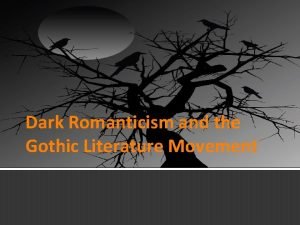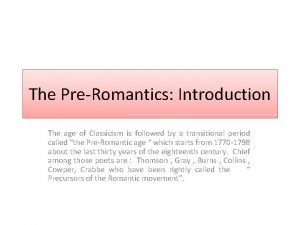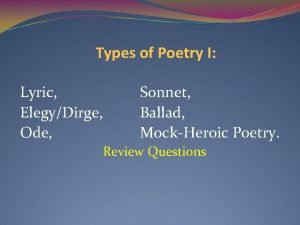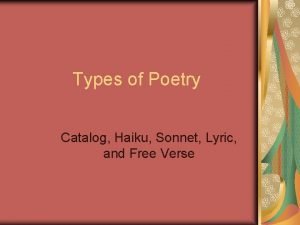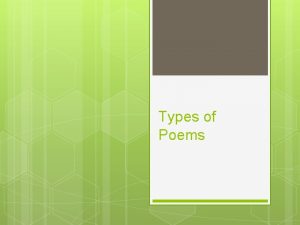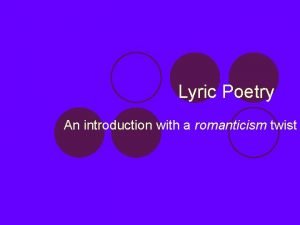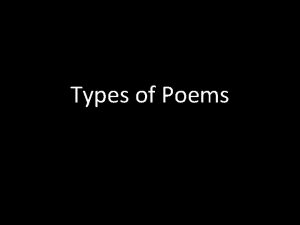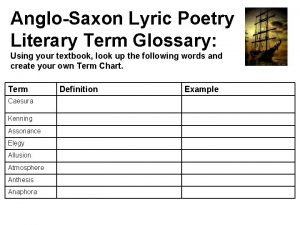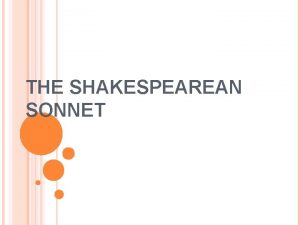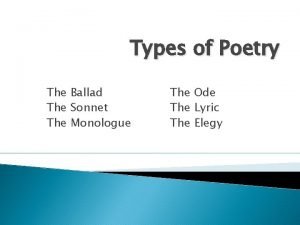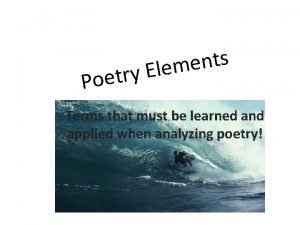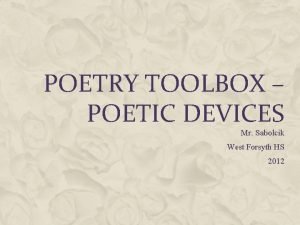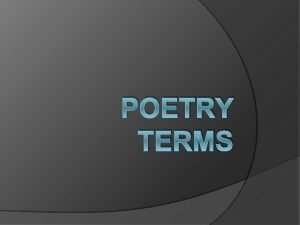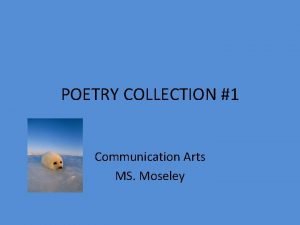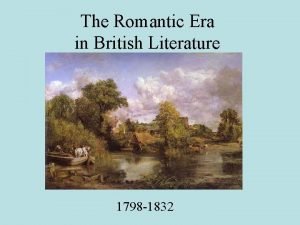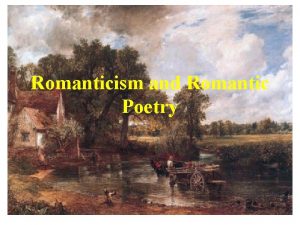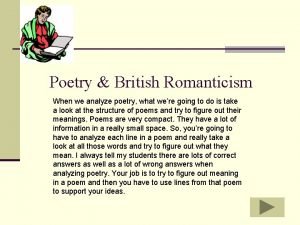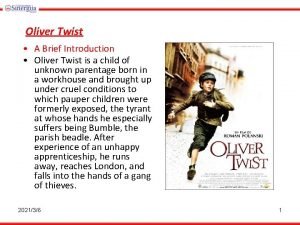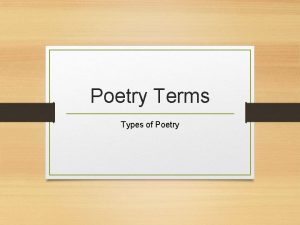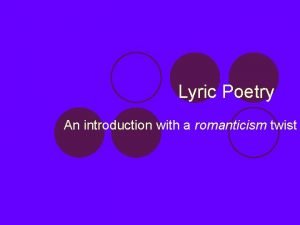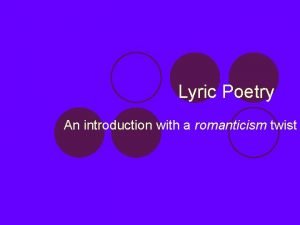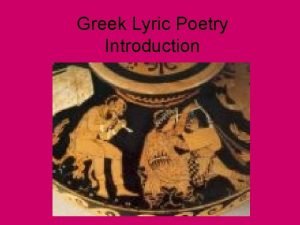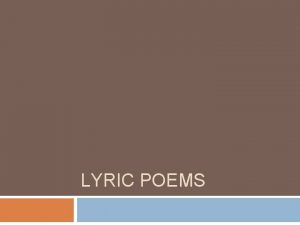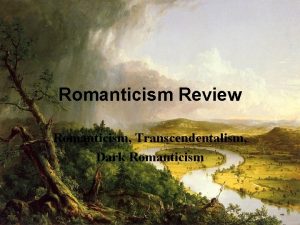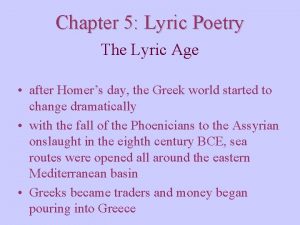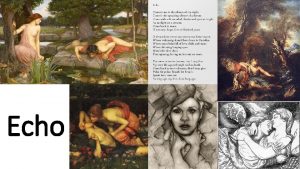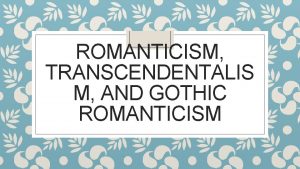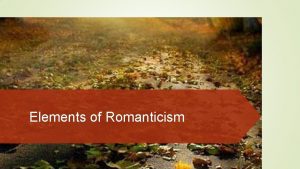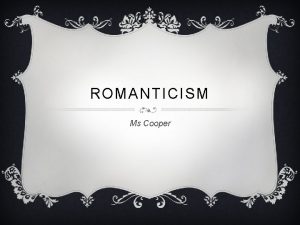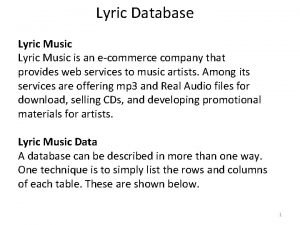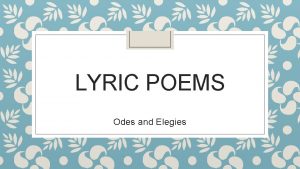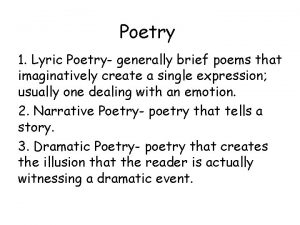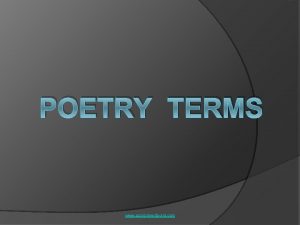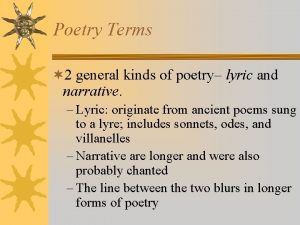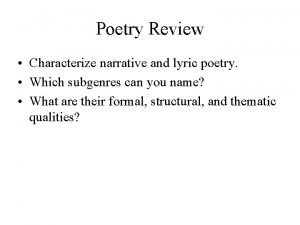Lyric Poetry An introduction with a romanticism twist






















- Slides: 22

Lyric Poetry An introduction with a romanticism twist

Song lyrics l On a separate sheet, write down your favorite song lyric (if it is explicit, make sure you use *** to indicate that). In about a sentence, explain what is so appealing to you about that song lyric.

What is Lyric Poetry? l Lyric poetry expresses the personal thoughts and feelings of a single speaker. ¡Have a melodious, song like structure ¡Use imagery, sound devices, and figurative language “Poetry. . . is. . . a speaking picture . . . ” —Sir Philip Sidney

Figurative Language l Simile: comparing two apparently unlike things, using like or as l Metaphor: comparing two apparently unlike things without using like or as l Personification: giving human traits to something nonhuman l Oxymoron: juxtaposing two opposite or contradictory words that reveal an interesting truth

Sound Devices l Repetition: repeated use of sounds, words, phrases, or sentences. Poets use repetition for emphasis as well as to create a musical effect. There are three popular devices that rely on repetition: “The fair breeze blew, the white foal ¡ Alliteration: repetition of initial consonant sounds “a frightful fiend / Doth close “The western wave was all ¡ Consonance: repetition of final consonant sounds “With heavy thump, a lifeless flew…” behind…” ¡ Assonance: repetition of similar vowel sounds aflame. ” l Rhyme: lump, …” repetition of sounds at the ends of words. ¡ End rhyme is the most common type of rhyme, which occurs when rhyming words appear at the ends of lines. ¡ Internal rhyme occurs when rhyming words appear within the same line. l Onomatopoeia: use of words that imitate sounds—for example, words like ring, boom, and growl.

Lyrical Ballads Poetry is…. is l “the spontaneous overflow of powerful feelings. ” Coleridge and Wordsworth

Ignoring the “love element” for a moment… l What makes this line romantic? ¡Focus on individual emotion ¡Comparison and link to nature My love for you is like a red, rose

The Natural Element l Comparisons are often made to nature… why? ¡“Nature” a creative and controlling force in the universe ¡An inner force or the sum of such forces in an individual.

Okay, so what makes it Lyrical? l Expresses the thoughts and emotions of one speaker… ¡“MY” ¡First person

Words and emotions create the tone of the poem l What is the tone?

What techniques are used? l Simile or Metaphor? l Imagery? l Alliteration? l Rhyme?

What words are used? l Love l Red l Rose

COMPARISON LOVE ROSE

Can you replace any of the words and achieve the same effect? l Yellow, white, pink? l Tulip, daffodil, lily? l Like, hate, tolerate?

So…how do words hold power? Explain.

A Red, Red Rose Robert Burns

Listen to the poem… Identify the techniques used to make the musical quality.

Now, Listen to the musical tune Burns’ poem as an old Scottish ballad.

Is it what you expected? Explain.

Does the tone change when music is added? Explain.

GUESS WHAT! Now you get to practice using words with power! Yahoooo! l Step 1: Fill in the following sentence stem choosing appropriate words to go in the blanks ¡My _____ for ______ is like a(n) (emotion) __________. (adjective) (noun from nature) (noun)

STEP 2: You can either… l Write a 4 line poem and a 2 -3 sentence interpretation of your poem using vocabulary related to romanticism l Write an 8 line poem using at least 2 sound devices. r u o ey s U ! W O ! y R l R e s i O w M e O T m i : t e s s Du a l c
 Whats a lyrical poem
Whats a lyrical poem Gothic romanticism art
Gothic romanticism art Pre-romanticism
Pre-romanticism The romanticism (1795 — 1835) what is romanticism
The romanticism (1795 — 1835) what is romanticism Types of lyric poetry
Types of lyric poetry Catalog poem example
Catalog poem example Types of poems ballad
Types of poems ballad Element of lyric poetry
Element of lyric poetry Blank verse poem
Blank verse poem Lyric poem literary definition
Lyric poem literary definition Sonnet lyric poetry
Sonnet lyric poetry Kinds of lyric poetry
Kinds of lyric poetry Sonnet 130 theme
Sonnet 130 theme Sonnet vs ballad
Sonnet vs ballad Poems with literary devices highlighted
Poems with literary devices highlighted Narrative poem examples
Narrative poem examples Whats a lyric poetry
Whats a lyric poetry Lyric poetry
Lyric poetry British literature romantic period
British literature romantic period Features of romantic poetry
Features of romantic poetry Romanticism poetry characteristics
Romanticism poetry characteristics American romantic poets
American romantic poets Oliver twist intro
Oliver twist intro

